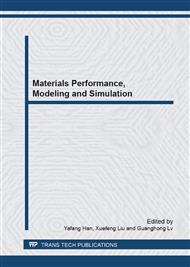p.260
p.268
p.274
p.282
p.287
p.294
p.299
p.303
p.308
Effect of Q-P-T Process on the Microstructure and Mechanical Properties of 300M Steel
Abstract:
The effect of Quenching-Partitioning-Tempering (Q-P-T) process on the microstructure and mechanical properties of 300M steel were investigated. X-ray diffraction, scanning electron microscopy and optical microscope were employed to characterize the evolution of microstructure as well as the volume fraction of retained austenite. The results showed that the samples treated by Q-P-T possess more retained austenite compared with traditional Quenching-Tempering process. After Q-P-T, the strength increased slightly, while the ductility and toughness improved markedly. Microstructure analysis indicated the difference between Q-T and Q-P-T process lies in the amount of the retained austenite as well as the size and size distribution of the martensite laths. The Q-T resulted in a little of thin film-like retained austenite in addition to wide martensite strip, while the Q-P-T resulted in large amount of thick-like austenite accompanying narrow martensite strip. Therefore, 300M steel with better ductility and toughness could be obtained by Q-P-T heat treatment.
Info:
Periodical:
Pages:
287-293
Citation:
Online since:
March 2013
Authors:
Keywords:
Price:
Сopyright:
© 2013 Trans Tech Publications Ltd. All Rights Reserved
Share:
Citation:


